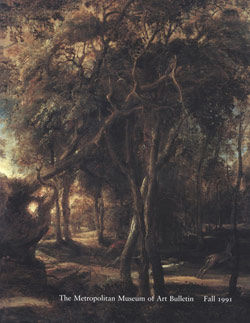Figure of Isis-Aphrodite
Roman Period
Isis-Aphrodite is a form of the great goddess Isis that emphasizes the fertility aspects associated with Aphrodite. She was concerned with marriage and childbirth and, following very ancient pharaonic prototypes, also with rebirth. Elaborate accessories, including an exaggerated calathos (the crown of Egyptian Greco-Roman divinities) emblazoned with a tiny disk and horns of Isis, heighten the effect of her nudity.
Figures depicting this goddess are found in both domestic and funerary contexts. Popular already in the 3rd to 2nd centuries B.C., they continued to be made in Roman times. Dating technology places this piece in the Roman period, probably about AD 150, and the long narrow face and rather dry expression do not contradict such a date.
#3537. Figure of Isis-Aphrodite
Due to rights restrictions, this image cannot be enlarged, viewed at full screen, or downloaded.





